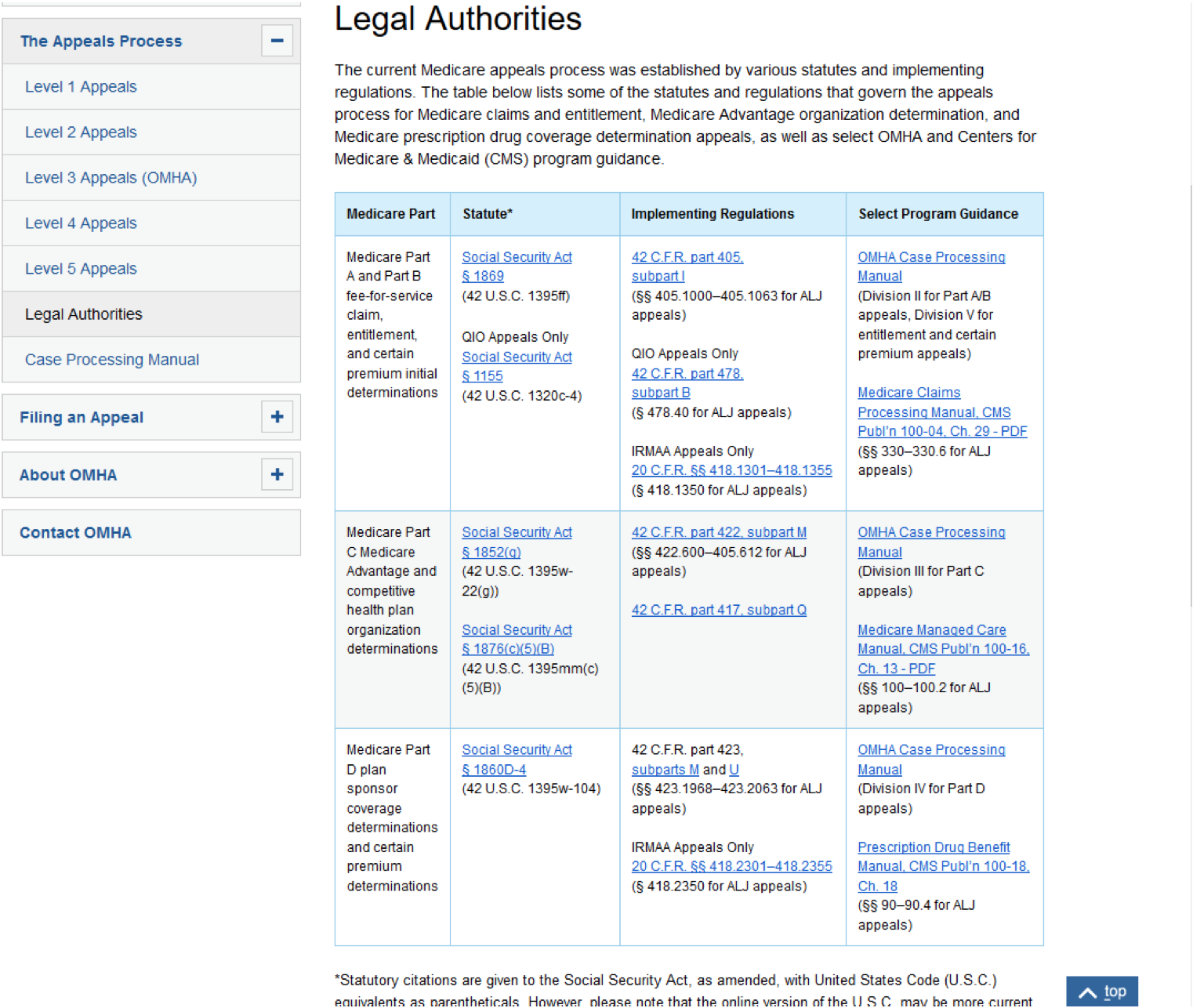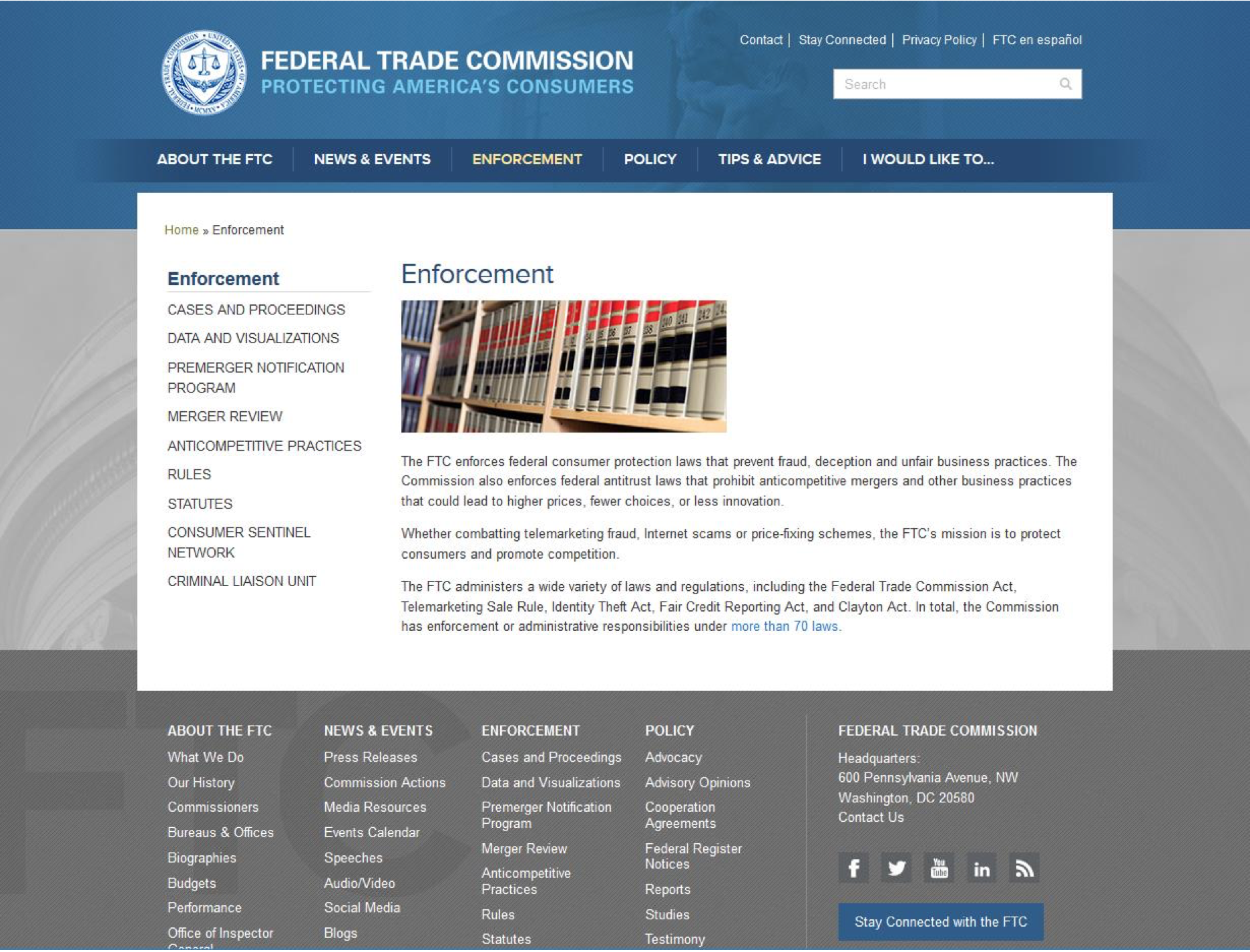Every year, federal agencies conduct hundreds of thousands of adjudications.[1] In order to participate meaningfully in adjudications, persons appearing before federal agencies must have ready online access both to the key materials associated with these adjudications (including prior decisions) and the procedural rules governing them. Administrative Conference Recommendation 2017-1 addresses the former set of materials, urging agencies to provide online access to the key documents associated with adjudications.[2] This Recommendation deals with the latter set of materials. It sets forth best practices to assist agencies in making their procedural rules available online and in organizing those materials in a way that is accessible to and comprehensible for the public and persons appearing before agencies, consistent with 5 U.S.C. §§ 552(a)(1), (a)(2), and other applicable provisions of law.[3]
A number of different sources create procedural rules that govern agency adjudications. At the very least, these sources include: (a) the Due Process Clause of the Constitution’s Fifth Amendment; (b) the adjudication provisions of the Administrative Procedure Act (APA);[4] (c) agency or program-specific statutes that set forth rules for particular types of adjudications; (d) agency-promulgated rules of procedure with legal effect; (e) agency precedents as set forth in decisions by agency officials authorized to engage in final agency action;[5] (f) adjudicator-specific practice procedures applicable across multiple cases, such as standing orders; and (g) agency-specific forms that persons appearing before an agency are required to use.
In addition, many agencies have issued guidance documents and explanatory materials that help persons appearing before agencies navigate the adjudicative process and guide agency adjudicators and other agency officials.[6] These documents and materials usually take the form of policy statements and other forms of agency guidance, that, if not published, cannot be used to the disadvantage of persons appearing before the agency.[7]
Under existing law, agencies, with some limited exceptions, are required to publish rules of procedure with general applicability and legal effect in the Federal Register and to codify such rules in the Code of Federal Regulations,[8] and those rules in turn are required to be published on the agency websites.[9] Generally, agencies have some discretion over how to organize these materials on their websites.
A review of existing agency websites reveals that agency practices vary widely. Some provide access on their websites to all relevant statutes, rules of practice, precedents, standing orders, forms, and guidance documents and explanatory materials, whereas others publish few or none of these things. Of those that do publish such documents and materials, some identify the sources of law from which the rules derive and clearly delineate between agency-promulgated rules of procedure with legal effect and (non-binding) guidance documents, whereas others do not. Finally, some websites are much more effective than others in organizing these materials and placing them in a logical location on the agency website such that they are easily accessible.
This Recommendation offers best practices to optimize agencies’ online presentation of procedural rules for agency adjudications. Implementation of these best practices will benefit not only individuals appearing before agencies, who need ready access to procedural rules in order to proceed effectively, but also agencies, which, among other things, have an interest in ensuring that non-binding explanatory materials are clearly labeled as such. These best practices will also advance the purpose of the E-Government Act and recent amendments to the Freedom of Information Act, which expand affirmative disclosure by federal agencies and ensure that key agency documents are made available.[10]
RECOMMENDATION
The following recommendations offer best practices for agencies to consider as they seek to make procedural rules publicly available and to present those rules and related materials in a way that is accessible to and comprehensible for the public and persons appearing before agencies:
- Agencies should provide updated access on their websites to all sources of procedural rules and related guidance documents and explanatory materials that apply to agency adjudications, including as relevant: (a) the provisions of the Administrative Procedure Act relating to adjudication (5 U.S.C. §§ 554–58); (b) statutory provisions providing procedural rules for adjudication; (c) agency-promulgated rules of procedure with legal effect; (d) guidance documents and explanatory materials relating to adjudicative procedures, including guides designed for persons appearing before an agency and agency adjudicators (e.g., manuals, bench books), excepting those covered by a Freedom of Information Act exemption that the agency intends to invoke; and (e) agency-specific forms that individuals must use. Agencies should also consider, as appropriate, providing access to adjudicator-specific practice procedures applicable across multiple cases, such as standing orders.
- In providing access to the materials pursuant to Paragraph 1, agencies should present the materials in a clear, logical, and comprehensive fashion. One way to do so is to display the materials published under Paragraph 1 in an easy-to-read table. An example appears in the Appendix. When possible, agencies should prominently delineate between binding and nonbinding materials.
- Agency-promulgated rules of procedure with legal effect should be accessible on agency websites in one easily searchable file. The rules should include a table of contents listing the rule titles. The rule titles should be hyperlinked to the rule text. The numbering system in the searchable file should mirror the Code of Federal Regulations’ (CFR) numbering system and provide a link to the official version of the CFR.
- When an agency’s mission consists exclusively or almost exclusively of conducting adjudications, the agency should link to its materials published under Paragraph 1 on the agency’s homepage. When conducting adjudications is merely one of an agency’s many functions, the agency should link to its rules and guidance from a location on the website that is both dedicated to adjudicatory materials and logical in terms of a person’s likelihood of finding the documents in the selected location, such as an enforcement or adjudications page. Examples appear in the Appendix.
Agencies should consider providing access on their websites to explanatory materials aimed at providing an overview of relevant agency precedents that apply the rules of procedure. Explanatory materials should link to applicable statutes, rules of procedure, and adjudicative precedents relating to adjudication procedures.
[1] See Admin. Conf. of the U.S., Recommendation 2016-2, Aggregate Agency Adjudication, 81 Fed. Reg. 40,260 (June 21, 2016).
[2] See Admin. Conf. of the U.S., Recommendation 2017-1, Adjudication Materials on Agency Websites, 82 Fed. Reg. 31,039 (July 5, 2017).
[3] Another ongoing Administrative Conference project addresses the online availability of agency guidance documents. Admin. Conf. of the U.S., Public Availability of Agency Guidance, https://www.acus.gov/research-projects/public-availability-agency-guidance. This recommendation deals only with the limited class of those documents relating to adjudication procedure.
[4] 5 U.S.C. §§ 554–58.
[5] Id. § 704. Decisions of the Supreme Court may also be considered a binding source of law. Whether lower-court decisions are binding is not addressed here.
[6] To facilitate ease of understanding, an agency should tailor explanatory materials to meet the needs of the members of the public who typically appear before it. Admin. Conf. of the U.S., Recommendation 2017-3, Plain Language in Regulatory Drafting, 82 Fed. Reg. 61,728 (Dec. 29, 2017).
[7] 5 U.S.C. §§ 552(a)(1)-(2); but see id. § 552(a)(1) (providing that an individual that has “actual and timely notice” of a requirement may be bound thereby even if the document was not published).
[8] 5 U.S.C. § 552(a)(1); 44 U.S.C. §§ 1505(a)(2), 1510(a); 1 C.F.R. §§ 5.2(c), 5.5, 5.9.
[9] See, e.g., E-Government Act of 2002, Pub. L. No. 107-347, § 206, 116 Stat. 2899, 2916 (amending 44 U.S.C. § 3501).
[10] E-Government Act of 2002, § 206, (amending 44 U.S.C. § 3501); FOIA Improvement Act of 2016, Pub. L. No. 114-185, § 2, 130 Stat. 538 (amending 5 U.S.C. § 552(a)(2)).
APPENDIX
Paragraph 2
Paragraph 2 reads in part, “[i]n providing access to the materials pursuant to Paragraph 1, agencies should present the materials in a clear, logical, and comprehensive fashion. One way to do so is to display the materials published under Paragraph 1 in an easy-to-read table.” The “Legal Authorities” page of the Office of Medicare Hearings and Appeals’ website (an office within the Department of Health and Human Services) demonstrates such a table.[11]
|
|
Paragraph 4
Paragraph 4 reads in part, “[w]hen an agency’s mission consists exclusively or almost exclusively of conducting adjudications, the agency should link to its materials published under Paragraph 1 on the agency’s homepage.” The Occupational Safety and Health Review Commission’s (OSHRC) website demonstrates how an agency can link to the procedural materials published from an agency’s home page.[12]
|
|
Paragraph 4 also reads in part, “[w]hen conducting adjudications is merely one of an agency’s many functions, the agency should link to its rules and guidance from a location on the website that is both dedicated to adjudicatory materials and logical in terms of a person’s likelihood of finding the documents in the selected location, such as an enforcement or adjudications page.” The Federal Trade Commission’s (FTC) website demonstrates how an agency can link to the published materials from an enforcement page.[13]
|
|
[11] DEP’T. OF HEALTH & HUM. SERVS., LEGAL AUTHORITIES, https://www.hhs.gov/about/agencies/omha/the-appeals-process/legal-authorities/index.html?language=es (last visited Oct. 22, 2018).
[12] OCCUPATIONAL SAFETY & HEALTH REV. COMM’N, HOME, https://www.oshrc.gov (last visited Oct. 22, 2018).
[13] FED. TRADE COMM’N, ENFORCEMENT, https://www.ftc.gov/enforcement (last visited Oct. 22, 2018).
Recommended citation: Admin. Conf. of the U.S., Recommendation 2018-5, Public Availability of Adjudication Rules, 84 Fed. Reg. 2142 (Feb. 6, 2019).



